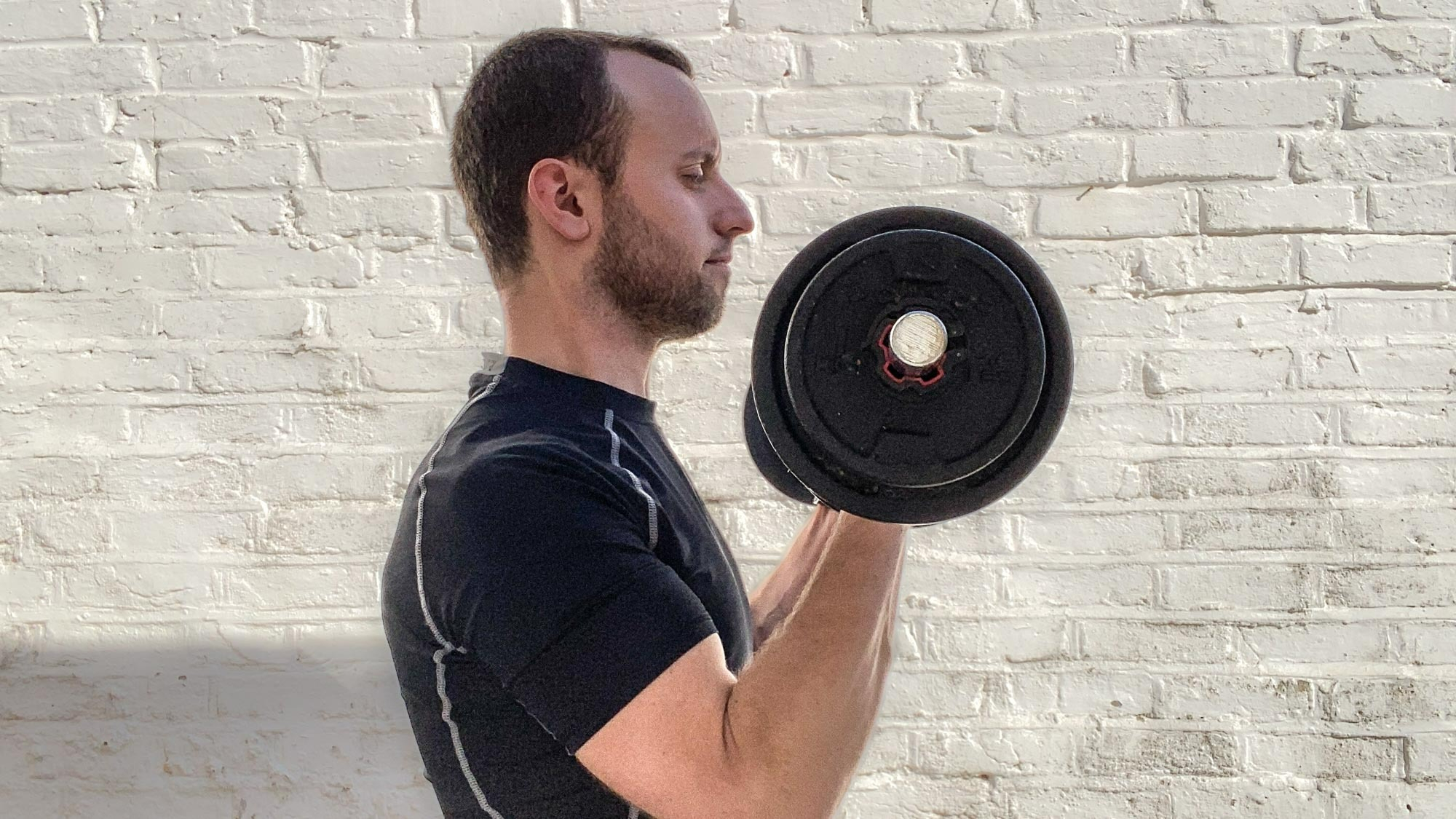
I didn’t start to exercise regularly until after I graduated from college, when I signed up for a gym, developed a routine, and would go several times a week to work out on the machines and occasionally dabble in free weights. But that all changed in early 2020 when the pandemic hit.
Like many others, I found myself cut off from my usual exercise habits, and scrambled around for an alternative. I started taking longer walks outside, which was for my wellbeing as much as my fitness, and after a couple of months, I managed to get my hands on a set of adjustable dumbbells.
For the first few months, I still missed the extra space and equipment I could use at the gym, but I signed up for a workout app, began to get more confident with my new weights, and found myself actually enjoying exercise a lot more than I had before.
It was such a dramatic change that I canceled my gym membership and carried on doing home workouts and taking long walks each morning, and I even managed to use the extra time to extend my usual meditation sessions. Here's why I decided to make the switch permanent.
My workouts became more varied
Once I signed up to the gym after college, I made myself a workout program, and then largely stuck to it for the next few years. I varied it slightly, but generally, it meant a quick cardio blast followed by a 45-minute weights session with machines, dumbbells, and barbells.
If I’m honest, it had got quite samey, and I would head to the gym because I felt like I should, not because I really wanted to anymore. Which also meant I’d begun to find excuses not to go to. Too much rain? Better stay at home. Feeling a bit tired? Should probably rest up on the couch.
Granted, I switched to home workouts because I had to, but it was a great opportunity to rethink what I actually like about exercise. I found that I really enjoyed short high-intensity resistance training (HIRT) with my weights, but also walking became a big part of my fitness routine.
I used to see more defined boundaries between gym workouts, yoga, and low-intensity activities like walking and hiking, but leaving the gym behind meant that I was more open to incorporating stretches into my dumbbell workouts, or bodyweight training around the house.
I stopped worrying about how I looked
Not long after I started going to the gym, I was diagnosed with a medical condition that meant I lost a lot of weight, and, even years on, I still struggle to gain weight. So, while I was exercising and getting stronger, I never really fit in with some of the regular gym-going crowd.
It made me really self-conscious too, and I’d actively avoid training around others, opting for a quiet corner where I could take a few weights and a mat. But when I was on the machines, I’d often dial up the weight to keep up appearances and try to, recklessly, prove myself in some way.
This kind of overtraining isn’t good for your body, can lead to injury, and also isn’t all that fun. So, when I made the jump to home workouts, all these issues completely disappeared. I had no one around to judge me (even if I was imagining this social pressure) and I could train at my own pace.
It also meant I felt more able to experiment with different workouts, which is how I came to try an old Richard Simmonds exercise class. And, now, if I want to rest, I can lay on the floor, play with the dog, or finish listening to a podcast before I start on my next set. It’s a lot calmer.
It saved a lot of money
Okay, so this is a fairly obvious point, but it definitely played a role in my decision-making. I was fortunate to have a budget gym nearby, so my monthly membership was around $30 per month. However, it’s more common to pay $50-70 each month, which sets you back around $840 a year.
Of course, that gets you access to the gym’s facilities, well-maintained equipment, and in some cases, classes and other benefits. But if you don’t use all of those (and I definitely didn’t) then switching to home workouts can save a substantial amount each month.
For a while, I did free workouts on YouTube, but eventually signed up to Centr, Chris Hemsworth’s workout app, after I got myself some adjustable dumbbells. An annual membership costs $120, but given that I used it several days a week, it seemed like good value.
Part of the reason I could make this switch was because I didn’t make full use of the equipment, and only ever really spent time on the treadmill. If you’re into exercise machine workouts, then it can quickly become expensive, but if you’re on a budget, you can build a home gym for under $500.







